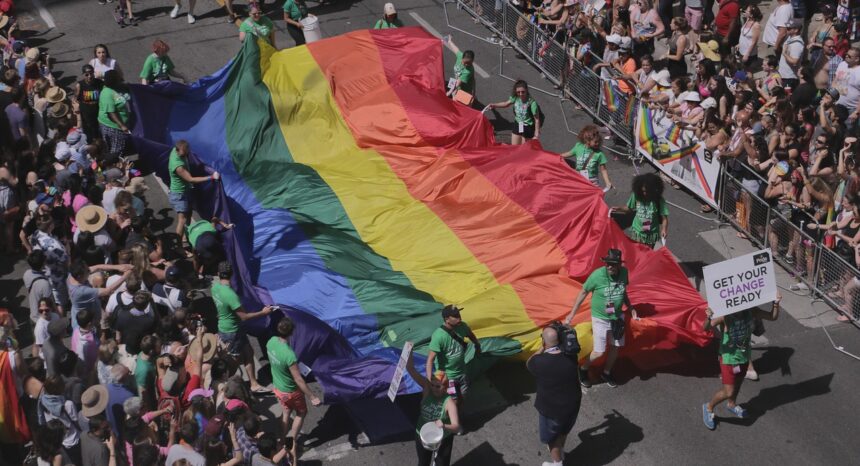From the Scholars Strategy Network, written by Lisa R. Miller, Indiana University-Bloomington, and Eric Anthony Grollman, University of Richmond. This article has been edited for Journalist’s Resource.
In April 2015, former Olympian athlete and television star Bruce Jenner, now known as Caitlyn Jenner, made history by coming out as a transgender person in a tearful interview with 20/20 reporter Diane Sawyer. Two months later, she graced the cover of Vanity Fair magazine, revealing her new name and gender identity. Although it took decades for Jenner to come out, she has suddenly become highly visible as a transgender woman, putting a national spotlight on transgender people and issues. Yet as many observers have noted, Jenner’s recent experiences are more the exception than the norm for the approximately 700,000 Americans who are transgender. A 2008 survey conducted by the National Center for Transgender Equality offers a grim picture of the lives of trans people in the United States.
Pervasive discrimination against transgender people
Transgender people are individuals whose gender identity and expression do not match their sex assigned at birth. Many undergo a process of gender transition in which they make modifications to their names and bodies. In western societies, most people assume there are only two sexes, female and male, and assign babies to one or the other at birth. Because their experiences challenge such deep-seated assumptions, the majority of transgender people face what is called “transphobic discrimination,” which is indeed pervasive. Analyzing data from the 2008 survey, we found that 70 percent of transgender people in the United States have experienced transphobic discrimination at least once in their lives.
- Major incidents of unfair treatment or verbal harassment are common. Roughly 35 percent of transgender Americans have been denied a job because of their identity, and 26 percent have had to keep their identity hidden in order to keep a job. Astonishingly, one-fifth report being denied equal treatment or even verbally harassed in a doctor’s office.
- Many transgender people also face prejudice in day-to-day interactions. In the workplace, more than two-fifths have been harassed, had personal information inappropriately shared, or been intentionally labeled with the wrong pronoun; and many have suffered similar incidents in retail stores, hotels, restaurants, airports, and on public transportation.
Major incidents of discrimination and daily prejudice make it difficult for transgender people to support themselves and their families, address personal needs, and feel included and safe.
Visible status leads to discrimination and, in turn, health problems
In our research, we assessed whether people more frequently understood to be transgender face more discrimination — and found that, indeed, 83 percent of those who report always being visibly transgender to others say they have experienced daily discrimination, compared to two-thirds of those who report never being “read” as transgender. Like other marginalized people, transgender people who face day-to-day prejudicial treatment as well as major discriminatory episodes suffer as a result. Discriminatory treatment causes personal distress and, if experienced frequently, can lead to severe mental and physical health problems.
- Discrimination compromises health through physiological responses such as elevated blood pressure and suppressed immune functioning.
- Attempts to cope with victimization can also be harmful — for example, we found that the more discriminatory treatment transgender people faced, the more likely they were to have attempted suicide or to have smoked cigarettes or abused drugs or alcohol. The most visibly non-gender-conforming people, who face the greatest discrimination, are at greatest risk for health problems.
Health difficulties can be exacerbated by unfair or inappropriate medical treatment. A number of respondents in the 2008 survey reported verbal harassment and other kinds of unfair or disrespectful conduct by medical personnel such as paramedics and emergency technicians, citing incidents in doctors’ offices, hospital or emergency rooms, and mental health clinics. In addition, many medical professionals are not fully prepared to address the needs of transgender people. Fears about discrimination or prejudiced treatment make transgender people less likely to seek and receive necessary medical care when health problems arise.
Related research: Lisa R. Miller and Eric Anthony Grollman, “The Social Costs of Gender Nonconformity for Transgender Adults: Implications for Discrimination and Health,” published in the Sociological Forum journal, September 2015.
The author is a member of the Scholars Strategy Network, where this post originally appeared.
Keywords: gender, gender nonconformity, LGBT, Caitlyn Jenner, research brief


Expert Commentary